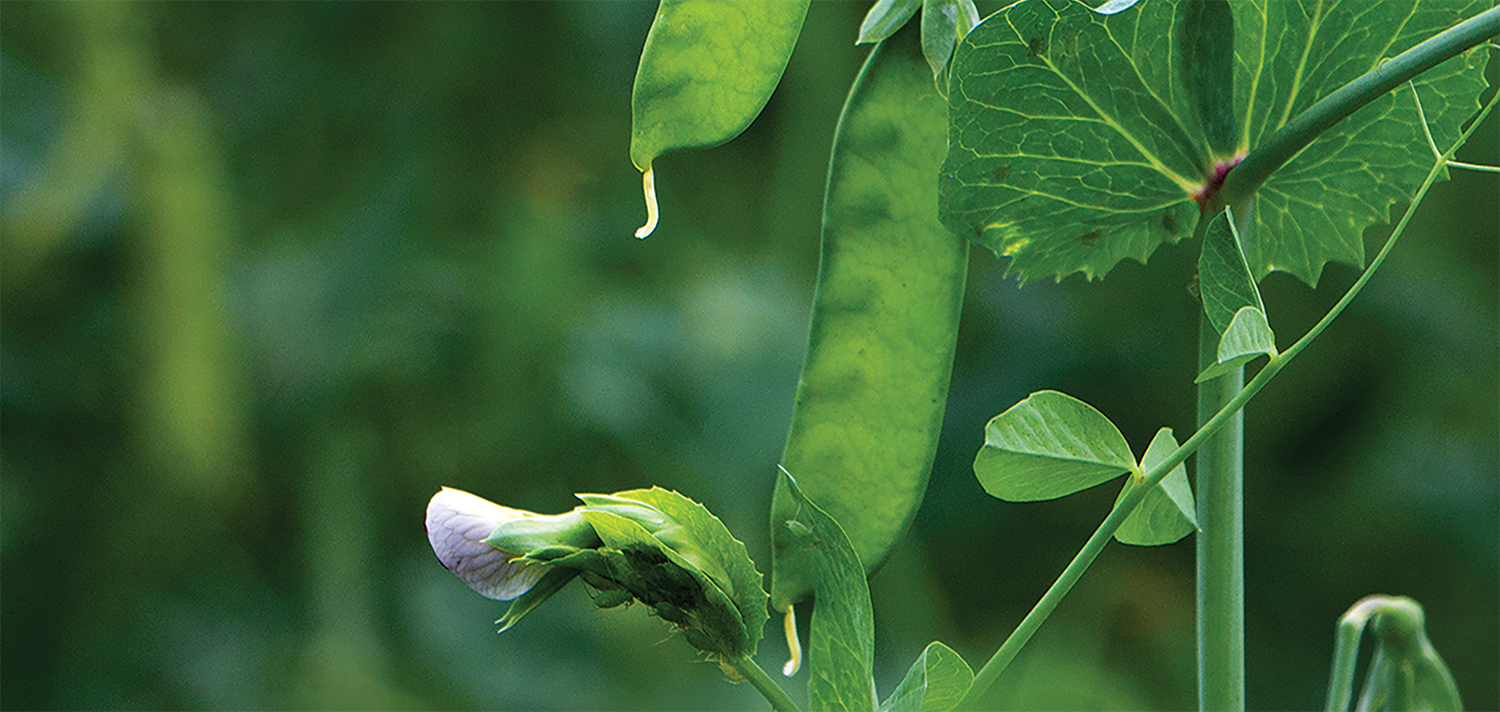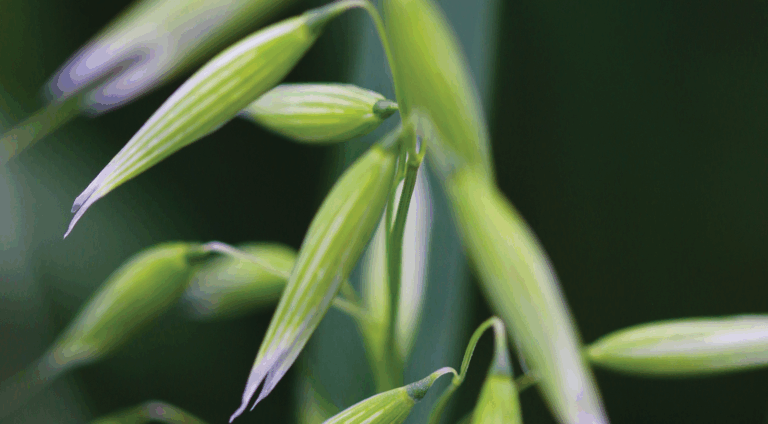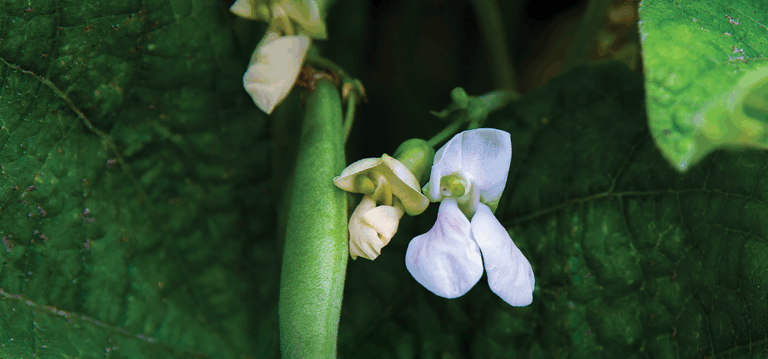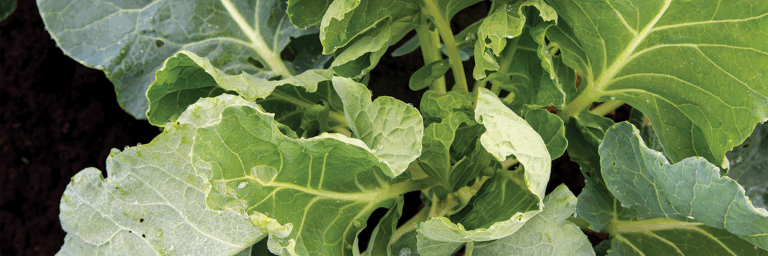Peavine: Whole Food Profile
The squeezed juice from the combined pods, vines, leaves, and stems of the common pea (Pisum sativum) is a nutritionally packed source of essential
vitamins and a significant source for phenolic compounds.
Key Nutrients in Peavine
Percentages shown as %DV per serving of 5g peavine juice extract.
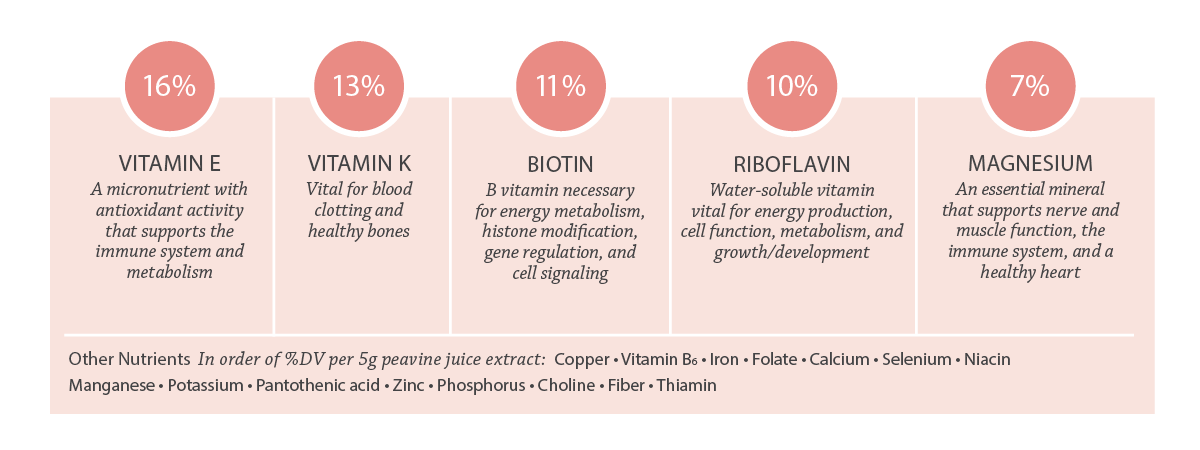
Total Phenolic Concentration in Peavine
Measured: Total Phenolics as Gallic Acid Equivalence (mg/g).

Phytoactives in Peavine
Chlorophyll
Green pigment in plants with potential anti-inflammatory, antioxidant, and anti-bacterial activity
Flavonols
Phenolic acids exclusive to oats with antioxidant and anti-inflammatory activities and a bitter perception
- Kaempferol
- Catechin (0.1 mcg/g)*Epicatechin (0.1 mcg/g)*
- Epigallocatechin
- Gallocatechin
Lignans
Large plant polyphenolic compounds that bypass human digestion, feed gut bacteria, and provide antioxidant activity
- Lariciresinol (0.5 mcg/g)* Pinoresinol (0.07 mcg/g)* Syringaresinol (0.04 mcg/g)*
- Medioresinol (0.035 mcg/g)*
- Secoisolariciresinol (0.00756 mcg/g)*
Phenolic Acids
Compounds that promote antioxidant activity and vascular health
- Sinapoyl-glucoside
Saponins
Support the immune system, healthy cholesterol levels, and blood glucose levels
- Soyasaponin I
- Soyasaponin ßg
Carotenoids
Antioxidants with anti-cancer potential and may lower risk of macular degeneration
- Lutein (7.22 mcg/g)**
- Zeaxanthin (0.39 mcg/g)**
*Data is mean values from Phenol-Explorer Database1
**Data on file with WholisticMatters. Values subject to change based on strain and experimental methods
Did you know WholisticMatters is powered by Standard Process? Learn more about Standard Process’ whole food-based nutrition philosophy.
Jin, A., Ozga, J. A., Lopes-Lutz, D., Schieber, A., & Reinecke, D. M. (2012). Characterization of proanthocyanidins in pea (Pisum sativum L.), lentil (Lens culinaris L.), and faba bean (Vicia faba L.) seeds.
Food Research International, 46(2), 528-535. doi:https://doi.org/10.1016/j.foodres.2011.11.018
Neugart, S., Rohn, S., & Schreiner, M. (2015). Identification of complex, naturally occurring flavonoid glycosides in Vicia faba and Pisum sativum leaves by HPLC-DAD-ESI-MSn and the genotypic effect on their flavonoid profile. Food Research International, 76, 114- 121. doi:https://doi.org/10.1016/j.foodres.2015.02.021
Reim, V., & Rohn, S. (2015). Characterization of saponins in peas (Pisum sativum L.) by HPTLC coupled to mass spectrometry and a hemolysis assay. Food Research International, 76, 3-10. doi:https://doi.org/10.1016/j.foodres.2014.06.043
Rothwell, J.A., et al., Phenol-Explorer 3.0: a major update of the Phenol-Explorer database to incorporate data on the effects of food processing on polyphenol content.
Database, 2013. 2013: p. bat070-bat070.
